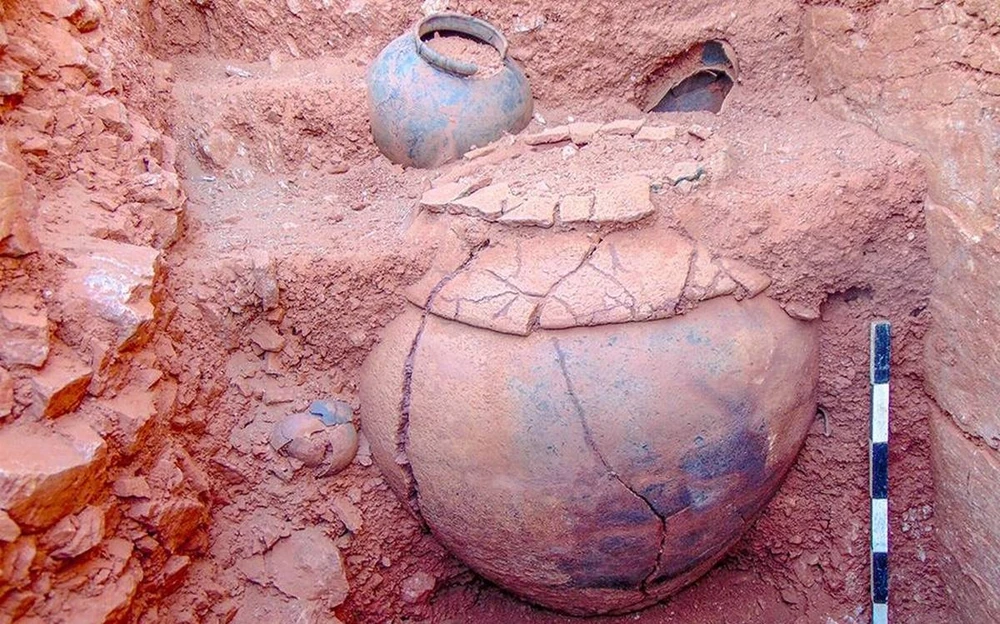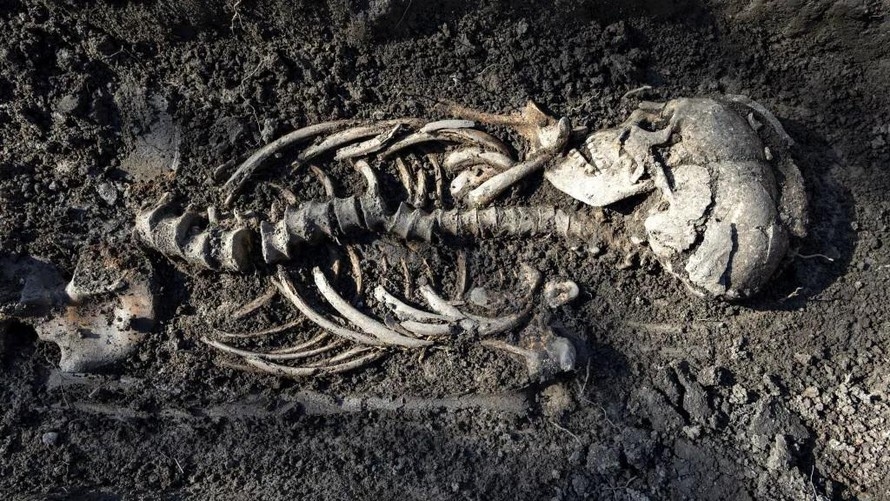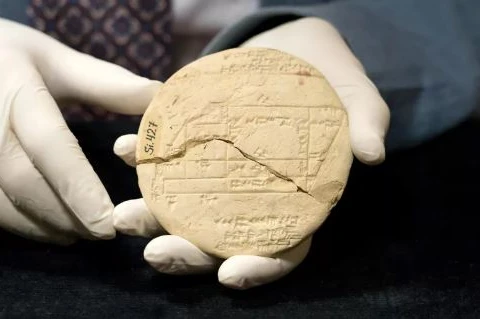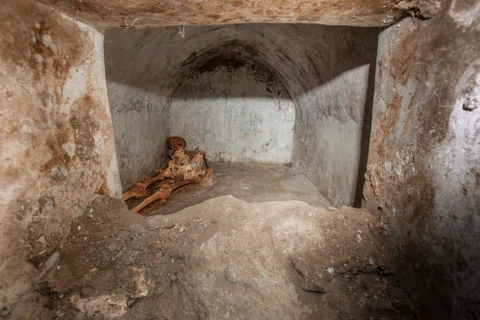 A ceramic jar containing grains of rice was found at the Tamirabarani civilization archaeological site in the state of Tamil Nadu, India. (Source: thehindu.com)
A ceramic jar containing grains of rice was found at the Tamirabarani civilization archaeological site in the state of Tamil Nadu, India. (Source: thehindu.com)Results of carbon dating of rice grains found in a newly excavated jar in Tamil Nadu state (Southern India) have proven that the Tamirabarani civilization existed 3,200 years ago.
Tamil Nadu state officials made the above announcement during a meeting of the state legislature on September 10.
The announcement stated: “With the current findings, we can come to the conclusion that a complete civilization existed along the Porunai River (now Tamiraparani River), with the port of Korkai and other areas. residents of Adhichanallur and Sivakalai.”
Last month, the Tamil Nadu state government sent the above rice samples to the Beta Analytical Laboratory based in Miami, Florida (USA), for dating.

[Detection of DNA of a previously unknown human race in Indonesia]
Scientists here confirm that these rice samples belong to the year 1155 BC.
According to experts, this is a new discovery of the archaeological community.
Carbon analysis results showed that these rice samples date back to 1155 BC, meaning the Sivakalai people lived in this area 3,200 years ago.

It is expected that the local government will establish an archaeological museum in Tirunelveli – where the above vase was discovered, and expand archaeological excavation and research in other countries such as Egypt, Oman, Indonesia, Thailand, Malaysia and Vietnam are places where Tamil people once had commercial and cultural exchanges./.






